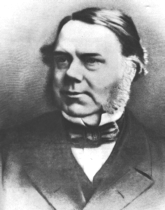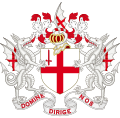This article has multiple issues. Please help improve it or discuss these issues on the talk page . (Learn how and when to remove these messages)
|
 Arms of the Clockmakers' Company, granted in January 1672. Blazon: Sable, a Clock ye Four Pillars thereof Erected on Four Lyons, and on Each Capital a Globe with a Cross, and in the Middest an Imperiall Crowne all Or, and for their Crest upon an Helmet Proper Mantled Gules Doubled Argent and Wreath of their Colours a Spheare Or, the Armes Supported by the Figures of a Naked Old Man Holding a Scithe and an Hour Glasse Representing Time, and of an Emperour in Roabes Crowned Holding a Scepter. | |
| Motto | Tempus Rerum Imperator |
|---|---|
| Location | 1 Throgmorton Avenue, London EC2N 2BY |
| Date of formation | 1631 |
| Company association | Horology |
| Order of precedence | 61st |
| Master of company | Robert Woolgar Wren |
| Website | clockmakers |
The Worshipful Company of Clockmakers was established under a Royal Charter granted by King Charles I in 1631. [1] It ranks sixty-first among the livery companies of the City of London, and comes under the jurisdiction of the Privy Council. The company established a library and its museum in 1813, which is the oldest specific collection of clocks and watches worldwide. [2] This is administered by the company's affiliated charity, the Clockmakers' Charity, [3] and is presently housed on the second floor of London's Science Museum. The modern aims of the company and its museum are charitable and educational, in particular to promote and preserve clockmaking and watchmaking, which as of 2019 were added to the HCA Red List of Endangered Crafts.
Contents
- Motto
- History
- Horological Training and Awards for Excellence
- Affiliations
- Masters
- Company Chaplains and Church
- Gallery
- See also
- References
- External links
The Clockmakers' Museum, comprising a collection of clocks, watches, portraits and ephemera is housed in a new gallery provided by the Science Museum, officially opened by Princess Anne on 22 October 2015. The museum was first established in 1813, and was housed at London's Guildhall from 1874 to 2014. It claims to be the oldest collection specifically of watches and clocks in the world. Though the collection is now housed in the Clockmakers' Museum in South Kensington, the company's archive and library are however still kept at Guildhall Library. The museum collection includes John Harrison's sea watch H5, once personally tested by King George III.






